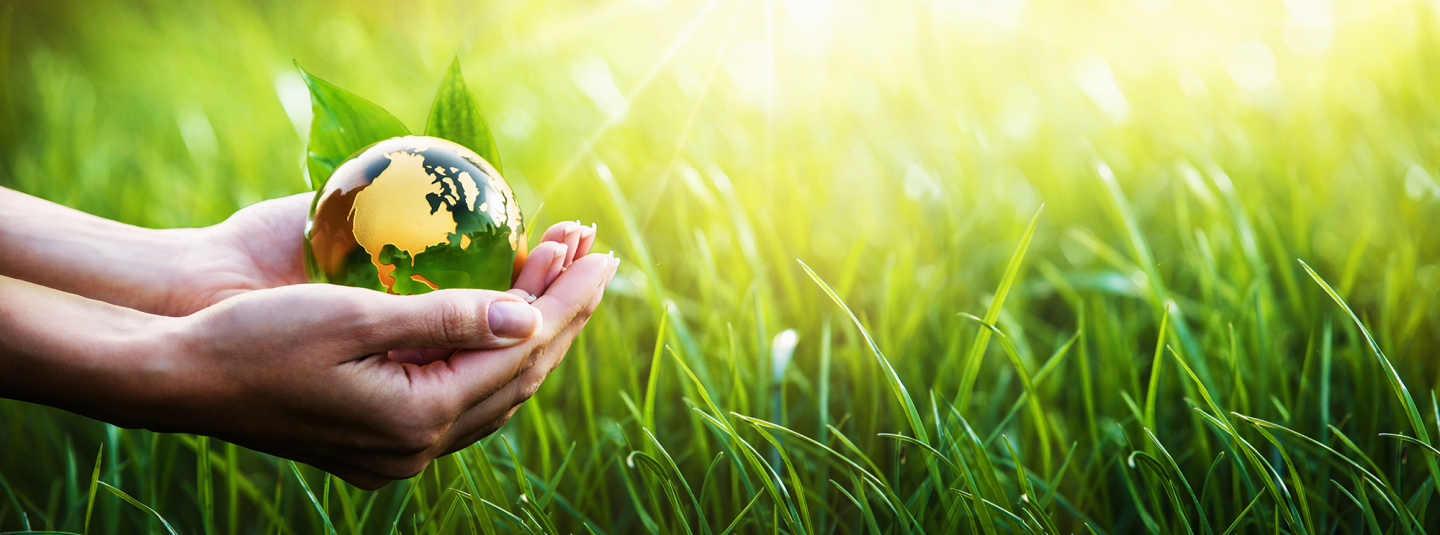Climate Action and Sustainability Pledge Philosophy And Development
This section summarizes the overall philosophy used to develop the pledge. It does not contain all of the statistics used to justify each selection; those statistics are listed in the pledge itself. This section is merely meant to provide a starting point for those interested in the background of some of these complex issues. Each category is discussed separately below.
Pledge Philosophy: Diet
Our first pledge category is Diet, because nothing is as impactful across all areas of sustainability as animal agriculture [1]. Animal agriculture affects biodiversity, extinction rates, pollution, human health, and greenhouse gas emissions. Modifying our diet can have an enormous beneficial impact. The beauty of this pledge category is that we can all make a huge contribution to solving urgent issues without any direct government intervention.
Undoubtedly, many of our students will feel that we have not gone far enough in the pledge. They will argue that we have not listed most of the detrimental effects of large animal agriculture. They are correct. For example, we have steered away from detailing issues of animal cruelty, simply because animal cruelty is not directly related to sustainability. We have also not listed some of the more horrific incidents that have occurred on large industrial farms – workers dying by falling into toxic manure pits [2], toxic manure spills twice as large as the Exxon Valdez oil spill [3], an estimated 35,000 miles of polluted waterways in the United States [4], etc. We felt that too much detail might actually make people feel ill, and make it seem as if animal agriculture is an issue too large to be effectively addressed.
On the other hand, some might think that the pledge goes too far. For this crowd, there is often a sense that technology will somehow save us from being unsustainable. They might argue that some large dairy operations, with the help of rebates and government grants, are now installing multi-million dollar methane digesters to capture some of the methane that cows produce, so dairies are becoming “greener” [5]. Some of these digesters appear to reduce the methane released by roughly half. While this is true, the dairies still produce enormous amounts of methane and other greenhouse gasses, so they are not close to being truly green. In addition, other adverse effects remain, such as enormous water use, and contamination of drinking water supplies of nearby communities [6].
Rangeland scientists often have concerns that removing all cattle from specific areas might lead to a severe loss of grasslands. This can be true. However, it is also true that proper restoration can often mitigate this potential loss. For example, the Tule Elk herds at Point Reyes National Seashore eat grasses [7]. Allowing the elk herds to expand and once again become the dominant grazers in the region could help to maintain the grasslands. In any case, the world is not about to run out of livestock anytime soon – the inhabitants of earth currently include estimated “standing populations” of 1.43 billion cattle, 1.87 billion sheep and goats, 0.98 billion pigs, and 19.60 billion chickens [8]. Approximately one third of the land’s surface is used for either direct livestock production or feed for livestock [9]. Significantly reducing this ecological footprint would allow us to start rehabilitating the natural systems that support us. We are not advocating that people who depend on livestock for livelihood, in marginalized areas, suddenly abandon their semi-nomadic ways of life and adopt a meat-free lifestyle. Such a switch may not be possible or even necessary. In this document, we are generally referring to Concentrated Animal Feeding Operations (CAFOs), where large herds of animals are maintained for industrial farming. Approximately 99% of the animals eaten in the United States come from factory farms [10].
We have deliberately not emphasized “food miles” and the “buy local” movement in the pledge. Although buying locally does help to build stronger communities, and provide for a more robust economy, the actual contribution of “food miles” toward the total climate impact of a given food item is very low. For example, the food miles contribute just a couple of percent, on average, to the greenhouse gas footprint of beef. Even with transportation factored in, beef is associated with a greenhouse gas climate cost of 50-200 times that of fruits and vegetables [11a, 11b].
Finally, we must include a brief comment about fishing. We have been forced to conclude (again) that large-scale fishing is unsustainable. We find ourselves in agreement with Dr. Sylvia Earle and other marine biology experts here [12a, 12b]. There are too many people, large fishing boats are too efficient, and fisheries in general are too depleted for large-scale fishing to make sense. Fish farming is not a panacea for wild fisheries. In addition to having its own set of environmental issues, it appears that farmed fish (such as salmon) have not actually driven down the demand for wild-caught fish. The opposite is true [13].
The question underlying the first pledge category, diet, remains: do you want to take control of your actions and directly contribute to solving sustainability and climate issues right now, or would you rather wait for large-scale governmental and societal programs?
Pledge Philosophy: Energy Use
Our second category is Energy Use. Energy generation is a major contributor to climate change, as well as environmental degradation (through mining, oil spills, etc.). We have included all energy use in this category, from small changes to large changes, as it provides a useful means for each person to think about his/her total energy footprint. One of the central challenges when thinking of a specific personal footprint is the interrelationship between individual actions, large-scale energy generation, and the ultimate effects on sustainability.
As one example, LED light bulbs can reduce the energy required to light your home by 50-75% [14]. If, in addition, your local company provides green energy, you have just “freed up” some green energy for other consumers – energy that would otherwise have most likely been obtained from burning oil or coal. The full benefit of our small-scale choices will be realized more effectively as governments promote large-scale transformations of the power grid.
This interaction between small-scale actions and the ultimate effect of those actions on sustainability becomes even more evident when making the decision to purchase an electric vehicle. Although the lifetime “climate cost” of electric vehicles is generally (almost always) lower than that of conventional gas powered vehicles, the initial climate cost of making electric vehicle batteries can be quite high. Recouping this climate cost can take from 2-10 years depending on driving patterns, where the batteries were made, and what form of energy (oil, coal, renewables) powers the large-scale electric grid used to recharge the vehicle [15, 16]. As renewable energy becomes more ubiquitous, electric vehicles will become correspondingly more “climate efficient.”
Of course, contemplating a massive switch to electric vehicles requires people to reflect on the true necessity of producing cars for everyone. As pointed out by other researchers, “the fact that we could theoretically make electric cars almost zero emission does not imply that private car ownership for 11 billion people is sustainable. Other planetary boundaries would come into play, such as resource scarcity, biodiversity, and livable cities. Recent studies found that shared autonomous vehicles with a size dependent on the trip made could (depending on implementation) result in a further 10-fold reduction in use of raw materials, energy, particulate emissions, and spatial footprint, especially when combined with (electric) bikes and public transport.” [17]. Although electric vehicles are a step forward, it could be time to start pressuring politicians in the United States to revive some of the previous public transportation systems, and develop new systems, such as shared electric vehicle programs.
Pledge Philosophy: Community Involvement
Our third category is Community Involvement, because although our individual actions can contribute to helping with sustainability, changing some of the underlying systems that are unsustainable will require collective action.
“Action” can be a scary word – in many people’s minds, it conjures up images of standing in front of large crowds with a megaphone, rallying for change. However, “action” can also be smaller-scale. Action can mean educating yourself and answering questions from friends and family about your own personal choices. Action can mean becoming involved with organizations that protect local lands. Action can mean attending City Council meetings.
Sonoma County is the first county in the United States where each city (and the county itself) has declared a climate emergency [18]. We are fortunate that the city councils are small, active, and dedicated to helping constituents focus on climate issues. Each of us can help, by attending council meetings, becoming involved in local projects and initiatives, and making our voices heard. If you choose to, you can go further, by attending local or national virtual trainings to become a climate/sustainability leader.
In working with students at Sonoma State, we have been inspired by the level of caring and commitment that students have to helping solve real world challenges. Many of today’s students want to work on issues that make a difference, and do so through faculty-led class projects, engagement with service opportunities, and environmental internships. Students often reach out to us looking for opportunities to help with these issues. We encourage everyone reading this pledge to be as inspired as the students are and help us all work on the challenges facing us in today’s complex world.
Pledge Philosophy Footnotes:
[1] Carrington, D. (May 2018), Avoiding meat and dairy is ‘single biggest way’ to reduce your impact on Earth, Guardian, U.S. Edition.
[2] Tietz, J., (2006). Boss Hog: The Dark Side of America’s Top Pork Producer, Rolling Stone Magazine, December 14, 2006.
[3] PERCIASEPE,, R., (1998), ASSISTANT ADMINISTRATOR FOR WATER, ENVIRONMENTAL PROTECTION AGENCY, Statement TO THE COMMITTEE ON AGRICULTURE, NUTRITION, AND FORESTRY, UNITED STATES SENATE.
[4] PERCIASEPE,, R., (1998), ASSISTANT ADMINISTRATOR FOR WATER, ENVIRONMENTAL PROTECTION AGENCY, Statement TO THE COMMITTEE ON AGRICULTURE, NUTRITION, AND FORESTRY, UNITED STATES SENATE.
[5] Wozniacka, G. (2020), Are Dairy Digesters the Renewable Energy Answer or a ‘False Solution’ to Climate Change?, Civil Eats, April 24, 2020.
[6] Humane Society of the United States (accessed April 2021), An HSUS Report: The Impact of Industrialized Animal Agriculture on the Environment.
[7] National Park Service (accessed April 2021), Tule Elk.
[8] Robinson TP, Wint GRW, Conchedda G, Van Boeckel TP, Ercoli V, Palamara E, et al. (2014) Mapping the Global Distribution of Livestock. PLoS ONE 9(5): e96084.
[9] Food and Agriculture Organization of the United Nations (2006), Livestock’s Long Shadow: Environmental Issues and Options, ISBN 978-92-5-1055-71-7.
[10] Foer, J.S., (2009), Eating Animals, page 12.
[11a] Poore, J., and T. Nemecek (2018), Reducing food’s environmental impacts through producers and consumers, Science, 01 Jun 2018:, DOI: 10.1126/science.aaq0216.
[11b] Our World In Data, (accessed April 2010), based on Poore and Nemecek (2018).
[12a] Bryce, E. (2014), Sylvia Earle on eating fish: 'Think of them as wildlife, first and foremost', The Guardian.
[12b] Wills, L. (accessed April 2021), National Geographic Oceanographer Sylvia Earle Says Clean Seafood and Vegan Alternatives Can Save Our Oceans, LiveKindly.
[13] Naylor, R., Rebecca J. Goldburg, Jurgenne H. Primavera, Nils Kautsky, Malcolm C. M. Beveridge, Jason Clay, Carl Folke, Jane Lubchenco, Harold Mooney, and Max Troell, (2000). Effect of aquaculture on world fish supplies, Nature.
[14] Center for Climate and Energy Solutions, (accessed April 2021), Home Energy Use.
[15] Mother Earth News, (accessed April 2021), The Green Car Payback Question.
[16] Carbon Brief, (accessed April 2021), Factcheck: How Electric Vehicles Help to Tackle Climate Change.
[17] Hoekstra, A., (2019), The Underestimated Potential of Battery Electric Vehicles to Reduce Emissions, Joule, V.3 Issue 6, doi.
[18] The Climate Mobilization, (2021), First in the Nation: Sonoma County United in Acknowledging Climate Emergency.


